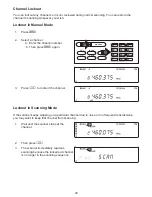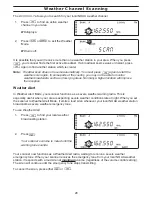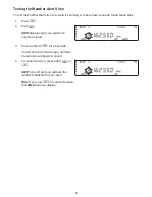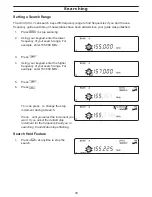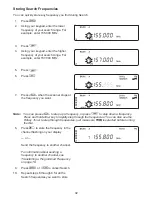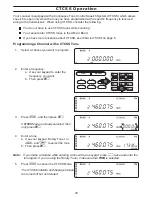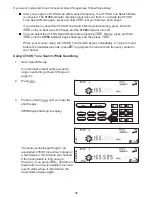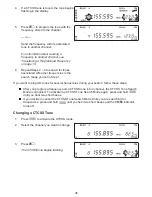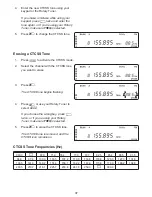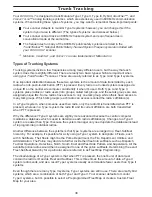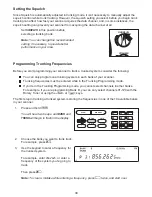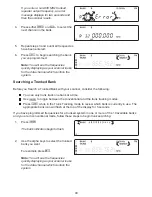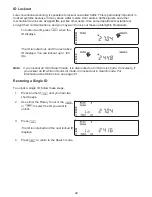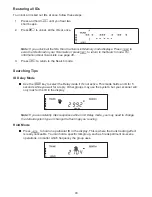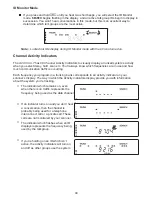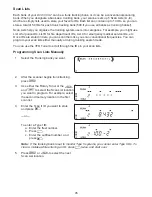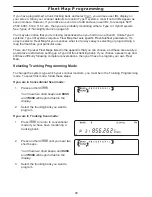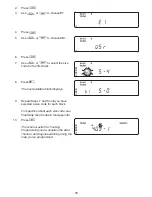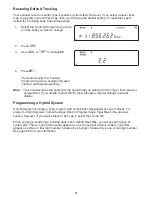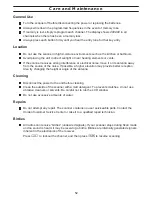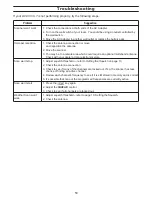
Trunk Tracking
Your
BC895XLT
is designed to track Motorola Type I, Type II, Type IIi, Hybrid,
SMARTNET
™, and
PRIVACY PLUS
™ analog trunking systems
*
, which are extensively used in 800 MHz communication
systems. When tracking these types of systems, you may want to remember these important points:
Your scanner defaults to monitor Type II systems; however, you can change this if the
system in your area is different. (The types of systems are discussed below.)
Your scanner cannot track an 800 MHz trunked system and scan frequencies in
conventional mode at the same time.
The frequencies for many of the 800 MHz public safety systems are listed in the
TrunkTracker™: National Public Safety Trunked System Frequency Guide
included with
your
BC895XLT
scanner.
*
Motorola,
SMARTNET
, and
PRIVACY PLUS
are trademarks of Motorola Inc.
Types of Trunking Systems
Trunking systems divide a few frequencies among many different users, but the way that each
system does this is slightly different. There are really two basic types which are important when
using your
TrunkTracker™
scanner. These are usually referred to as Type I and Type II systems.
One important distinction between these two systems is the amount of data transmitted by each
radio when its push-to-talk button (PTT) is pressed. Every radio in a trunked system is assigned a
unique ID so the central site computer can identify it when it’s used. Both Type I and Type II
systems place radios (or radio users) into groups, called talk groups, and these talk groups are also
assigned unique IDs. Some radios have access to only one talk group, while others have access to
many talk groups. Which talk group(s) each radio can access is called the radio’s affiliation(s).
In a Type II system, when someone uses their radio, only the radio ID is transmitted when PTT is
pressed, whereas in a Type I system the radio ID and its current affiliation are both transmitted
when PTT is pressed.
Why the difference? Type II systems are slightly more advanced because the central computer
maintains a database which is used to determine each radio’s affiliation(s). Changes to a Type II
system are easier than Type I because the system manager only need update the database instead
of reprogramming individual radios.
Another difference between the systems is that Type I systems are arranged in a Fleet-Subfleet
hierarchy. For example, it’s possible for a city using a Type I system to designate 4 Fleets, each
with 8 Subfleets. Their fleets might be the Police Department, the Fire Department, Utilities, and
Administration. The Police may decide to further divide their fleet into subfleets such as Dispatch,
Tactical Operations, Detectives, North, South, East and West Side Patrols, and Supervisors. All the
available police radios would then be assigned to one of the police subfleets. Determining the exact
Fleet-Subfleet hierarchy for a particular area is referred to as Fleet Map Programming.
The disadvantage of a Type I system is that when PTT is pressed, the brief burst of data must
contain the radio’s ID and its Fleet and Subfleet. This is three times the amount of data a Type II
system radio sends, and as a result Type I systems usually accommodate fewer users than Type II
systems.
Even though there are many Type II systems, Type I systems are still in use. There are also Hybrid
systems which are a combination of both Type I and Type II. Your scanner defaults to monitor
Type II systems, but it’s possible to select a Preprogrammed Fleet Map or create a Custom Fleet
Map for your area.
38

